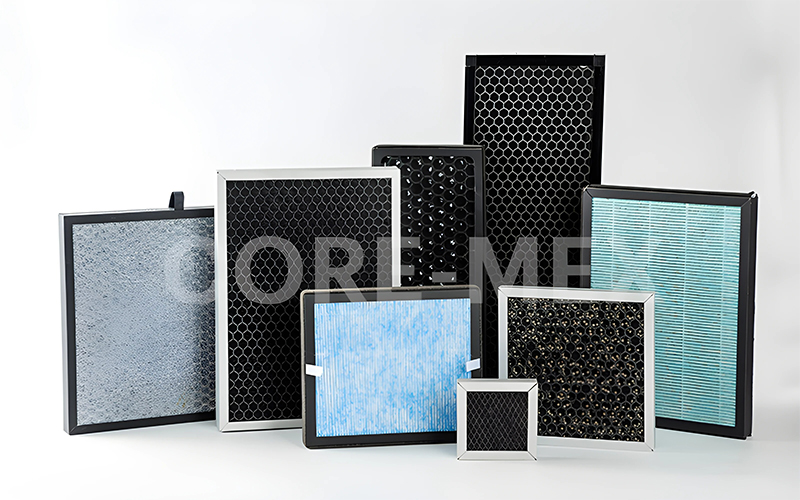Formaldehyde is a common harmful gas that significantly impacts human health. It primarily originates from indoor decorating materials such as wallpaper, paint, and furniture, and its release cycle can last from 3 to 15 years. Therefore, to ensure indoor air quality, it is necessary to take measures to remove formaldehyde.
Activated carbon filters are a highly effective material for air purifiers, capable of efficiently removing pollutants from indoor air, including formaldehyde. So, how does an activated carbon filter remove formaldehyde?
Activated carbon is a highly efficient filtering material that can adsorb organic substances. Its primary mechanism is to utilize the strong adsorption properties of activated carbon to filter out pollutants. The surface area of activated carbon material is very large, allowing it to reach a certain adsorption capacity. When air passes through the filter, formaldehyde molecules in the air are adsorbed by the activated carbon material, thereby effectively removing formaldehyde.
The process of formaldehyde adsorption by an activated carbon filter can be divided into three stages: adsorption, saturation, and regeneration. During the adsorption stage, formaldehyde molecules in the air enter the pores of the activated carbon material through the filter and are adsorbed onto the surface. When the adsorption capacity of the activated carbon material reaches its limit, it enters the saturation stage. At this point, the activated carbon filter needs to be regenerated to restore its ability to adsorb formaldehyde. The regeneration process mainly involves using heat, airflow, or steam to expel the adsorbed formaldehyde molecules, thereby restoring the adsorption capacity of the activated carbon material.
In addition to activated carbon filters, there are other methods for filtering formaldehyde, such as ultraviolet photolysis and photocatalytic methods. However, in comparison, activated carbon filters are more suitable for household use due to their stable and reliable filtering effects and relatively affordable prices. Therefore, to ensure home air quality, choosing an efficient activated carbon filter is essential.

